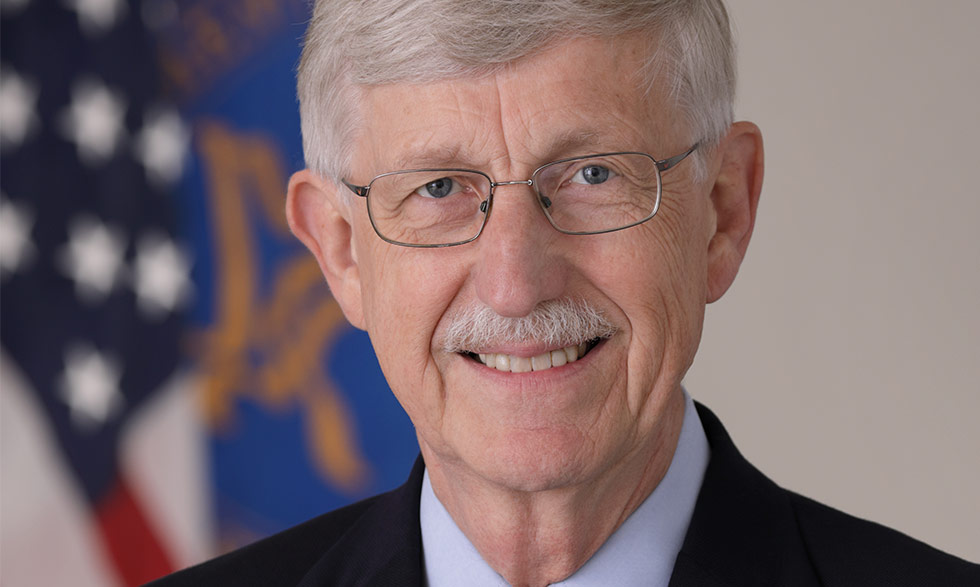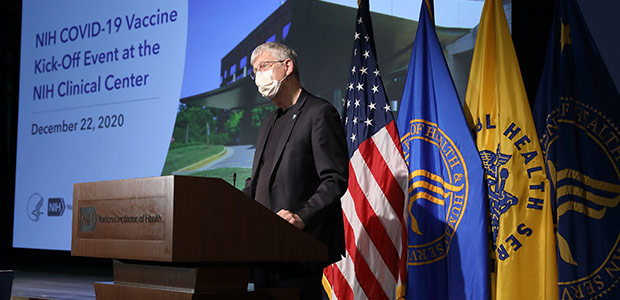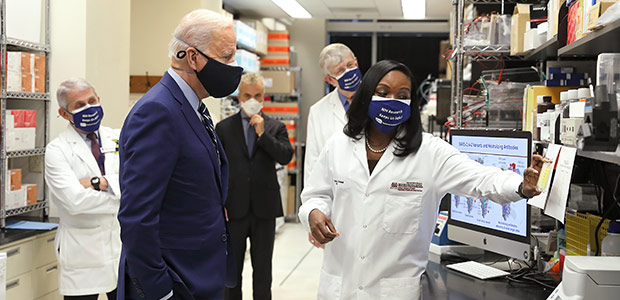
Last updated on August 6th, 2021 at 11:50 am
Since the first news of SARS-CoV-2, the virus that causes COVID-19, surfaced, the National Institutes of Health (NIH) has spearheaded research to help understand, treat, and protect people from the virus, and examine its wider impact on our health and communities.
NIH Director Francis S. Collins, M.D., Ph.D., spoke about how the organization’s 40,000-plus staff and the greater research community have responded to everything from vaccines and testing to mental health and health disparities. He also explains what’s next on the horizon for COVID-19 research and how NIH is already preparing for future pandemics.
How is NIH promoting testing and vaccination in communities around the U.S., especially with underserved and vulnerable populations who are more likely to be burdened by COVID-19?
African Americans, Latinos, and Native Americans have shouldered an unduly serious burden from this terrible pandemic, and we at NIH need to be doing everything we can, through research, to understand ways to intervene and provide assistance.
With regard to clinical trials, we want to be sure that if we’re testing a treatment or a vaccine, that those interventions are being tested in all communities, including the most vulnerable populations. We’ve worked hard to include that kind of community engagement, to try to be sure that those hard-hit groups have a chance to have their questions answered and to consider signing up. In the face of this urgent situation, that has been challenging, but I think we’ve made real progress.
For this effort, I’ve got to say, much credit goes to the institutes at NIH that have taken this on—particularly to Gary Gibbons [M.D.] of the National Heart, Lung, and Blood Institute and Eliseo Pérez-Stable [M.D.] of the National Institute on Minority Health and Health Disparities. They have also co-led CEAL, which stands for the Community Engagement Alliance Against COVID-19 Disparities. It focuses on addressing misinformation around COVID-19 and questions like, how do we build trust [within] these hard-hit communities by engaging with their community leaders so that we can really listen to their concerns and provide answers to the skepticism that has existed in those communities?
With regard to testing, one of the reasons that this disease has hit [underserved] communities so hard is because they haven’t really had access to point-of-care testing that would tell a person, “It would be better not to go to work today because you’re already infected with this virus, and if you do go out in the community, there’s a chance of further spreading it.” We’ve put together a program called RADx-UP—Rapid Acceleration of Diagnostics for Underserved Populations—which is already out in the field. More than 60 different [funding] awards have been made to try to do this kind of community engagement and make testing available. We will be able to assess how convenient access to testing will be received, and how it can change the course of community spread.
Can you describe the Accelerating COVID-19 Therapeutic Interventions and Vaccines (ACTIV) program?
In March 2020, looking at the landscape of what was being done to develop treatments, there were a lot of small studies and hundreds of ideas about therapeutic agents that might work. But there was no prioritization process, no coordinated way to get those agents into clinical trials that would be well-designed, randomized, placebo-controlled—all the things you need if you’re really going to trust the answer. That is not what was needed for the worst pandemic in 102 years.

I called up a lot of my colleagues in academia and in industry, and in a very short period of time, we assembled a group to talk about whether all sectors could become real partners in this effort. After an initial positive discussion, it took just two weeks for this partnership to come into being. It’s called ACTIV. This has intensely involved about a hundred people, about half of them from industry and half from government and academia. They pretty much dropped everything else. They organized themselves into four very intense working groups on preclinical issues, clinical issues, clinical trials, and vaccines. The Foundation for NIH provided expert program management, which made the whole enterprise work remarkably well.
All of that has now gotten us to the point where we do know a lot of treatments that don’t work—and that’s really important—and a few that really do: remdesivir, dexamethasone, high-dose heparin for hospitalized patients, and monoclonal antibodies for outpatients. That’s a pretty impressive menu, but it’s not big enough. We’re still deep into that, even a year later, because this is not over and we want to be sure we have tested every idea.
How is NIH research tackling the issue of mental health right now?
There are so many consequences of COVID-19 that have made life extremely difficult for everybody across the world, and certainly that includes the U.S. Hardly anyone has been untouched, whether it is by their own illness or that of a family member, the economic distress that’s fallen on so many people, or consequences of isolation and being in a circumstance that none of us expected would be part of our daily life but now is. You can’t look at this circumstance and not [see] that [an impact on] mental health is one of the big consequences of COVID-19. Certainly, surveys have shown that the vast majority of people are feeling significant stress.
NIH, of course, has an entire institute to devoted to these issues—the National Institute of Mental Health (NIMH)—and NIMH has worked hard to get information out there about resources that can help people who are struggling with anxiety, depression, and fear.
This won’t be our last pandemic, so we need to identify what we can learn from this and what kind of interventions would be most helpful for people who are going through this kind of struggle, both now and in the future. So, as part of our agenda, along with vaccines and drugs that might be effective treatments, we also need the mental health issues to get the same kind of attention. We’re working hard on that. Josh Gordon [M.D., Ph.D.], the director of NIMH, has been front and center, and is helping to design the next generation of pandemic research studies at NIMH.
Many people have been working around the clock on the vaccine and other COVID-19 research. Who are some of the NIH heroes who are part of this process?
There are many! Some of the first who come to mind are those at NIH’s Vaccine Research Center (VRC) who, within a day after the posting of the sequence of the genome of the SARS-CoV-2 virus, went about designing what the vaccine would look like. They built on work they had pursued for many years, using messenger RNA as the way in which the vaccine could be developed. Then they collaborated with the company Moderna. And within 63 days of the initial posting of the viral genome sequence, the first patient was getting injected with a phase 1 vaccine. Among those VRC heroes are Kizzmekia Corbett [Ph.D.], Barney Graham [M.D., Ph.D.], and John Mascola [M.D.], who led that effort under Tony Fauci [M.D.]’s able oversight. And look where we are now.

I have to mention Dr. Fauci himself as one of our heroes, not only for his scientific leadership, but also the way in which he has been out there fearlessly in the public view, providing information that is absolutely based upon evidence and truth.
There are countless other folks who have been heroic. Across every NIH institute, people have dropped everything from the kind of research they were doing and pushed forward in new directions to try to discover things that we needed to know about.
How does NIH track and prevent future pandemics?
We need to learn the lessons from this dreadful experience so that, if there’s a future pandemic, we will be as prepared as possible. We’re already considering what those lessons might be. One of the things we really have not developed for this pandemic, because the time has been so short, is an array of really powerful antiviral drugs that would be very specific in knocking out this coronavirus. We need to push that agenda right now and are starting that process.
I think we’ve also learned some really interesting things about how to do science quickly. One example is the development of new diagnostic tests. We were asked by Congress in April 2020 to really pull out all the stops with new technologies that would allow us to diagnose COVID-19 in people in a few minutes. That was the program called RADx—Rapid Acceleration of Diagnostics. And what Bruce Tromberg [Ph.D.] and his team at NIBIB did, which had never really been done before, was turn NIH into a venture capital organization. We said, “OK folks, we have money, and we have experts. Bring your best ideas about how that kind of technology can be developed.” To date, we have managed to support no fewer than 28 brand-new technologies to do diagnostic testing for COVID-19, and collectively those are contributing about 2 million tests a day—including the first home tests.
What is something that you wish more people knew about NIH?
When you hear about a breakthrough in cancer research, or maybe in nutrition, in diabetes, or a basic science discovery about the brain, if it happened in an American academic institution, it’s extremely likely it was funded by NIH. I wish everybody knew that taxpayer money is making possible advances across the board, in ways that have greatly, over the decades, enhanced human life and survival.
I also don’t think a lot of people know that we run a hospital, NIH’s Clinical Center, which is the largest research hospital in the world. Great things happen there: the first development of chemotherapy, the first human gene therapy, the development of lithium and ketamine for depression, and many more milestones. It’s an amazing place, and the people who work there are truly dedicated to trying to find answers to [address] human suffering. That’s why we call ourselves not just the National Institutes of Health, but the National Institutes of Hope.
This interview has been edited for length and clarity.
